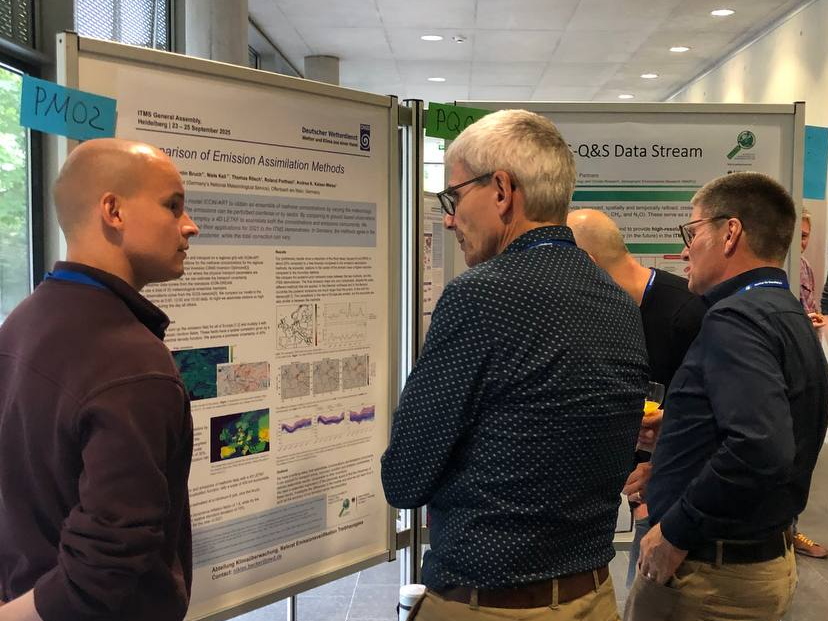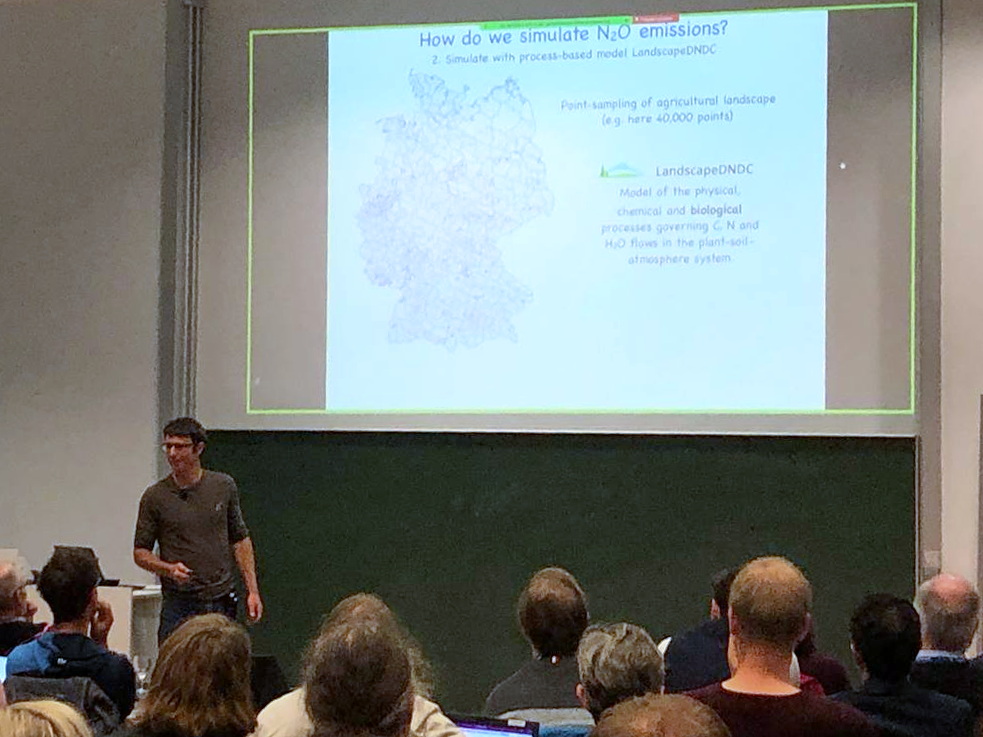
3rd ITMS General Assembly in Heidelberg: Progress in National Greenhouse Gas Monitoring
At the third ITMS General Assembly in 2025 at Heidelberg University, around 100 researchers discussed current findings and strategies for the further development of the greenhouse gas monitoring system in Germany and Europe.
At the end of the first project phase, the ITMS project partners met from 24 to 26 September 2025 for the third ITMS General Assembly at Heidelberg University. Over three days, new research findings were presented, open questions discussed, and possible next steps outlined. In addition to lectures and poster presentations, the meeting offered ample opportunities for direct conversations, fostering collaboration across disciplines. Around 100 participants from 28 institutions contributed their expertise — from greenhouse gas measurements in the atmosphere to land- and water-based sources and sinks, as well as questions of emissions reporting. A key focus was on networking and further developing joint strategies. The members of the scientific advisory board accompanied the discussions with their external assessments. The BMFTR and the BMV acknowledged ITMS's work during their visit. Additional scientific input was provided by the invited speakers Sander Houweling (VU Amsterdam) and Michaela Hegglin (FZJ).

Integrated Greenhouse Gas Monitoring System for Germany (ITMS)
Since December 2021, the ITMS project has been funded by the Federal Ministry Research, Technology and Space (BMFTR). The focus is on atmospheric modelling, measurements of greenhouse gas concentrations, and the analysis of sources and sinks of long-lived greenhouse gases. The Integrated Greenhouse Gas Monitoring System for Germany is being developed to provide a transparent, verifiable representation of CO2, CH4, and N2O emissions and sinks.
At the Campus Alpine of KIT IMK-IFU in Garmisch-Partenkirchen, the Division Terrestrial Bio-Geo-Chemistry, headed by Ralf Kiese, is responsible for coordinating the "Sources and Sinks" (Q&S) module. He is supported by Clemens Scheer, Head of the research group "Landscape Fluxes" within the Division, and Hannes Imhof.
This module provides a priori estimates of greenhouse gas exchange between the land surface and the atmosphere. Together with observations from Module B, these data form an essential basis for inverse modelling in Module M, which can be used to represent the formation and distribution of greenhouse gases as accurately as possible in terms of location and time.
The aim is to establish an operational system to support national greenhouse gas reporting and provide a scientific basis for further climate protection measures in Germany.
Research on greenhouse gas emissions at KIT Campus Alpine
At the Campus Alpine of KIT IMK-IFU, scientists are working on improving the calculation of greenhouse gas emissions from agriculture, forest ecosystems, peatlands, and flowing waters. Andrew Smerald is leading the development of a flexible modelling system based on LandscapeDNDC, which is particularly used for arable and grassland areas. Hassane Moutahir and Rüdiger Grote combine their expertise in agricultural and forest modelling to provide data on greenhouse gas emissions from forests in Germany. Sergey Blagodatskiy and Melanie Thurner are enhancing individual model processes, including the simulation of greenhouse gas emissions from organic soils and peatlands (MODELPEAT) and accounting for frost-thaw events that can cause short-term nitrous oxide emissions in spring (Agri-For-Live).
Ricky Mwanake is working to improve greenhouse gas measurements from flowing waters and to develop a method for calculating landscape-wide greenhouse gas emissions to better incorporate these emissions into the overall balance in future assessments.
European Collaboration
The Bio-Geo-Chemistry Division is also involved in the Horizon Europe 2020 project PARIS. Clemens Weber and Benjamin Wolf integrate ITMS findings into European modelling approaches, thereby promoting knowledge transfer between national and European initiatives.

